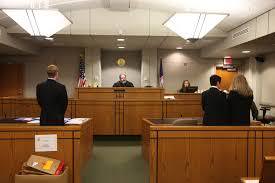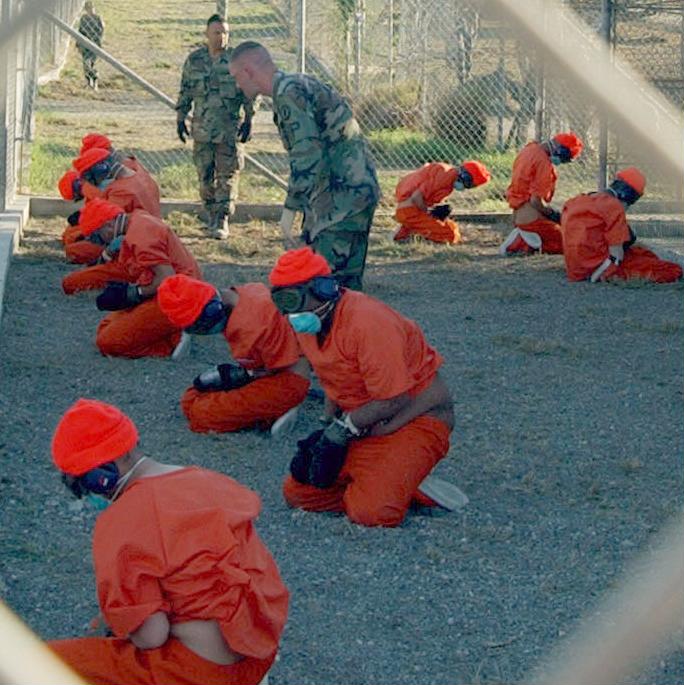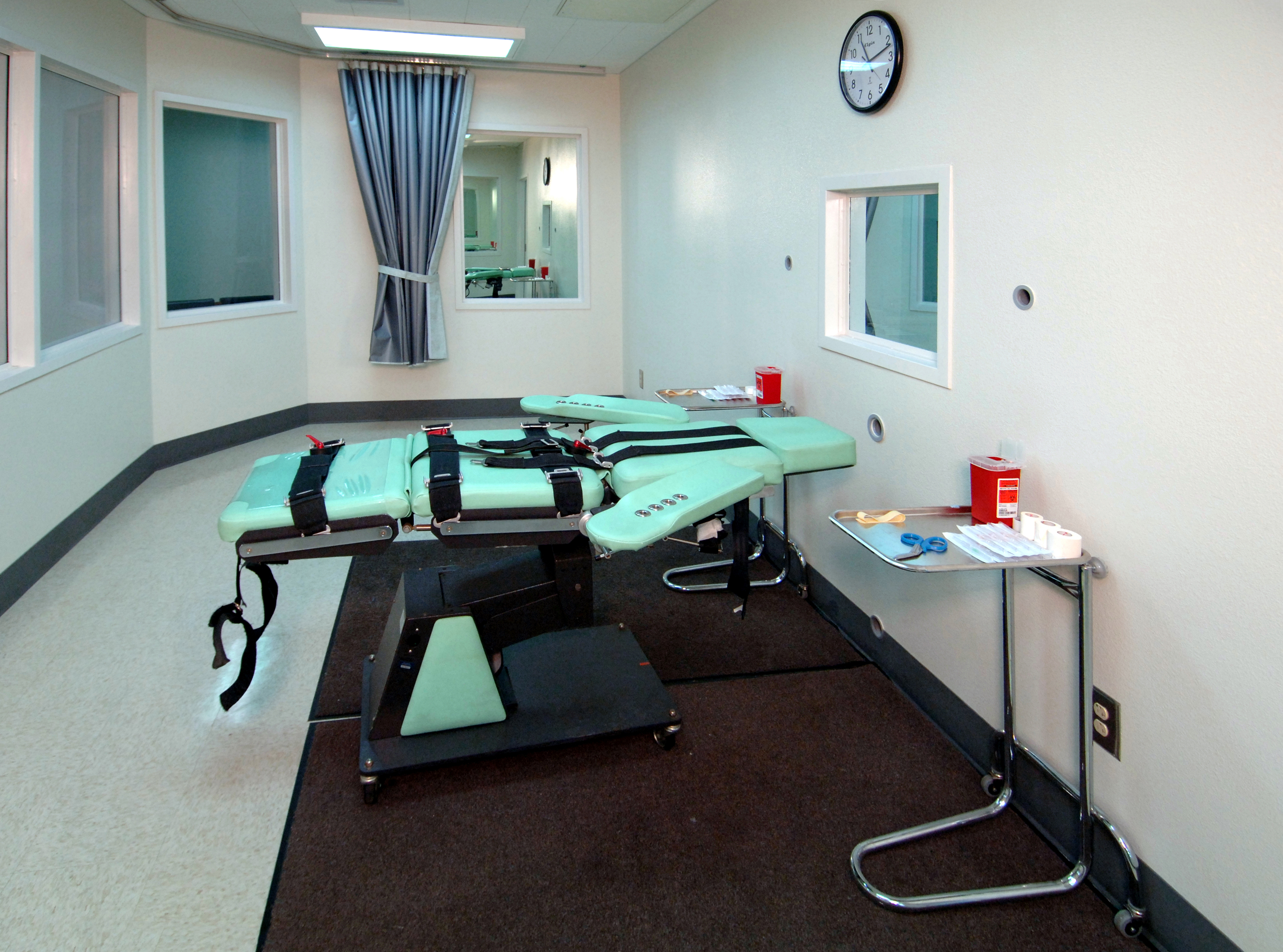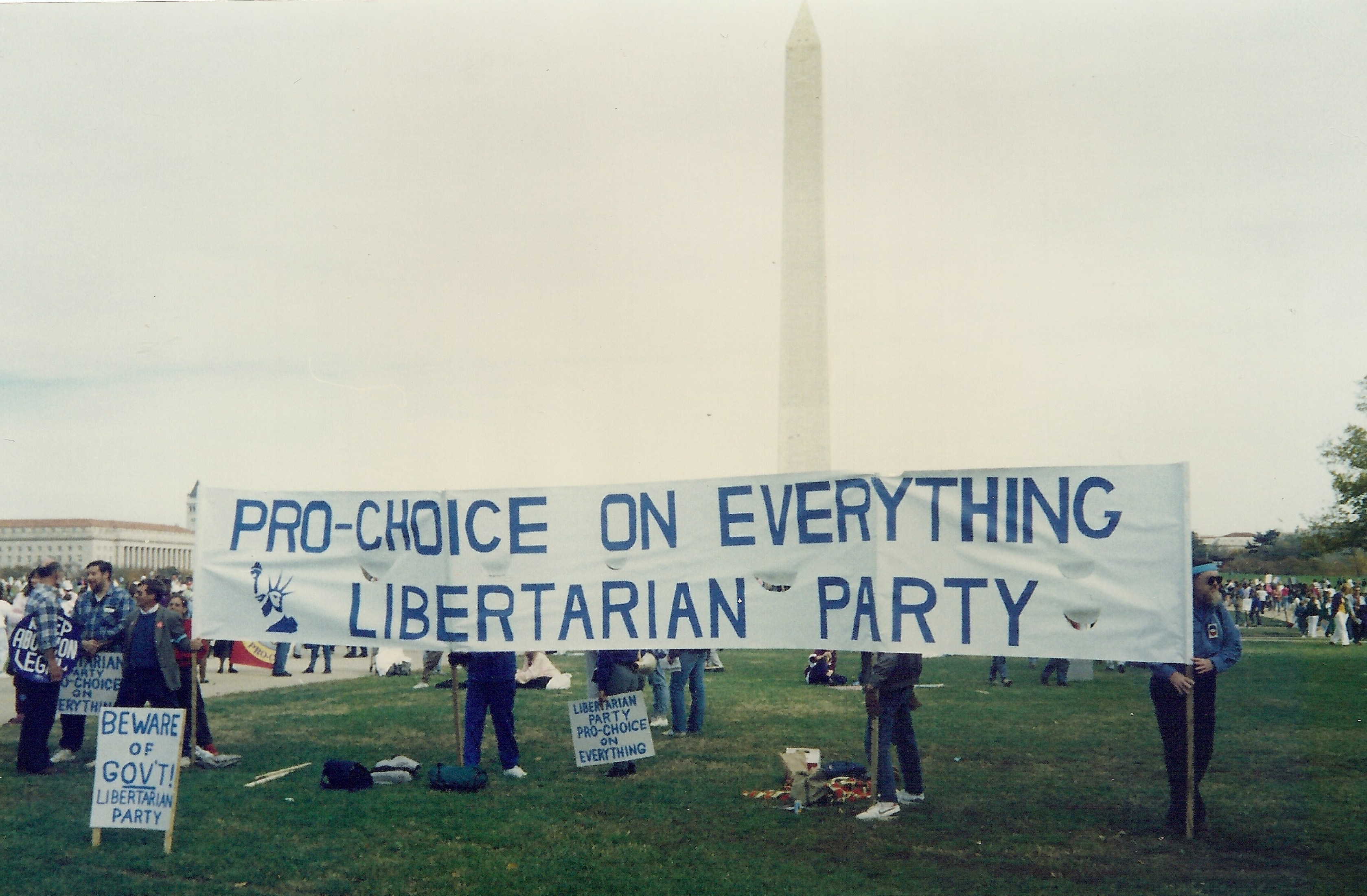4.9: Due Process
- Page ID
- 5853
\( \newcommand{\vecs}[1]{\overset { \scriptstyle \rightharpoonup} {\mathbf{#1}} } \)
\( \newcommand{\vecd}[1]{\overset{-\!-\!\rightharpoonup}{\vphantom{a}\smash {#1}}} \)
\( \newcommand{\dsum}{\displaystyle\sum\limits} \)
\( \newcommand{\dint}{\displaystyle\int\limits} \)
\( \newcommand{\dlim}{\displaystyle\lim\limits} \)
\( \newcommand{\id}{\mathrm{id}}\) \( \newcommand{\Span}{\mathrm{span}}\)
( \newcommand{\kernel}{\mathrm{null}\,}\) \( \newcommand{\range}{\mathrm{range}\,}\)
\( \newcommand{\RealPart}{\mathrm{Re}}\) \( \newcommand{\ImaginaryPart}{\mathrm{Im}}\)
\( \newcommand{\Argument}{\mathrm{Arg}}\) \( \newcommand{\norm}[1]{\| #1 \|}\)
\( \newcommand{\inner}[2]{\langle #1, #2 \rangle}\)
\( \newcommand{\Span}{\mathrm{span}}\)
\( \newcommand{\id}{\mathrm{id}}\)
\( \newcommand{\Span}{\mathrm{span}}\)
\( \newcommand{\kernel}{\mathrm{null}\,}\)
\( \newcommand{\range}{\mathrm{range}\,}\)
\( \newcommand{\RealPart}{\mathrm{Re}}\)
\( \newcommand{\ImaginaryPart}{\mathrm{Im}}\)
\( \newcommand{\Argument}{\mathrm{Arg}}\)
\( \newcommand{\norm}[1]{\| #1 \|}\)
\( \newcommand{\inner}[2]{\langle #1, #2 \rangle}\)
\( \newcommand{\Span}{\mathrm{span}}\) \( \newcommand{\AA}{\unicode[.8,0]{x212B}}\)
\( \newcommand{\vectorA}[1]{\vec{#1}} % arrow\)
\( \newcommand{\vectorAt}[1]{\vec{\text{#1}}} % arrow\)
\( \newcommand{\vectorB}[1]{\overset { \scriptstyle \rightharpoonup} {\mathbf{#1}} } \)
\( \newcommand{\vectorC}[1]{\textbf{#1}} \)
\( \newcommand{\vectorD}[1]{\overrightarrow{#1}} \)
\( \newcommand{\vectorDt}[1]{\overrightarrow{\text{#1}}} \)
\( \newcommand{\vectE}[1]{\overset{-\!-\!\rightharpoonup}{\vphantom{a}\smash{\mathbf {#1}}}} \)
\( \newcommand{\vecs}[1]{\overset { \scriptstyle \rightharpoonup} {\mathbf{#1}} } \)
\( \newcommand{\vecd}[1]{\overset{-\!-\!\rightharpoonup}{\vphantom{a}\smash {#1}}} \)
\(\newcommand{\avec}{\mathbf a}\) \(\newcommand{\bvec}{\mathbf b}\) \(\newcommand{\cvec}{\mathbf c}\) \(\newcommand{\dvec}{\mathbf d}\) \(\newcommand{\dtil}{\widetilde{\mathbf d}}\) \(\newcommand{\evec}{\mathbf e}\) \(\newcommand{\fvec}{\mathbf f}\) \(\newcommand{\nvec}{\mathbf n}\) \(\newcommand{\pvec}{\mathbf p}\) \(\newcommand{\qvec}{\mathbf q}\) \(\newcommand{\svec}{\mathbf s}\) \(\newcommand{\tvec}{\mathbf t}\) \(\newcommand{\uvec}{\mathbf u}\) \(\newcommand{\vvec}{\mathbf v}\) \(\newcommand{\wvec}{\mathbf w}\) \(\newcommand{\xvec}{\mathbf x}\) \(\newcommand{\yvec}{\mathbf y}\) \(\newcommand{\zvec}{\mathbf z}\) \(\newcommand{\rvec}{\mathbf r}\) \(\newcommand{\mvec}{\mathbf m}\) \(\newcommand{\zerovec}{\mathbf 0}\) \(\newcommand{\onevec}{\mathbf 1}\) \(\newcommand{\real}{\mathbb R}\) \(\newcommand{\twovec}[2]{\left[\begin{array}{r}#1 \\ #2 \end{array}\right]}\) \(\newcommand{\ctwovec}[2]{\left[\begin{array}{c}#1 \\ #2 \end{array}\right]}\) \(\newcommand{\threevec}[3]{\left[\begin{array}{r}#1 \\ #2 \\ #3 \end{array}\right]}\) \(\newcommand{\cthreevec}[3]{\left[\begin{array}{c}#1 \\ #2 \\ #3 \end{array}\right]}\) \(\newcommand{\fourvec}[4]{\left[\begin{array}{r}#1 \\ #2 \\ #3 \\ #4 \end{array}\right]}\) \(\newcommand{\cfourvec}[4]{\left[\begin{array}{c}#1 \\ #2 \\ #3 \\ #4 \end{array}\right]}\) \(\newcommand{\fivevec}[5]{\left[\begin{array}{r}#1 \\ #2 \\ #3 \\ #4 \\ #5 \\ \end{array}\right]}\) \(\newcommand{\cfivevec}[5]{\left[\begin{array}{c}#1 \\ #2 \\ #3 \\ #4 \\ #5 \\ \end{array}\right]}\) \(\newcommand{\mattwo}[4]{\left[\begin{array}{rr}#1 \amp #2 \\ #3 \amp #4 \\ \end{array}\right]}\) \(\newcommand{\laspan}[1]{\text{Span}\{#1\}}\) \(\newcommand{\bcal}{\cal B}\) \(\newcommand{\ccal}{\cal C}\) \(\newcommand{\scal}{\cal S}\) \(\newcommand{\wcal}{\cal W}\) \(\newcommand{\ecal}{\cal E}\) \(\newcommand{\coords}[2]{\left\{#1\right\}_{#2}}\) \(\newcommand{\gray}[1]{\color{gray}{#1}}\) \(\newcommand{\lgray}[1]{\color{lightgray}{#1}}\) \(\newcommand{\rank}{\operatorname{rank}}\) \(\newcommand{\row}{\text{Row}}\) \(\newcommand{\col}{\text{Col}}\) \(\renewcommand{\row}{\text{Row}}\) \(\newcommand{\nul}{\text{Nul}}\) \(\newcommand{\var}{\text{Var}}\) \(\newcommand{\corr}{\text{corr}}\) \(\newcommand{\len}[1]{\left|#1\right|}\) \(\newcommand{\bbar}{\overline{\bvec}}\) \(\newcommand{\bhat}{\widehat{\bvec}}\) \(\newcommand{\bperp}{\bvec^\perp}\) \(\newcommand{\xhat}{\widehat{\xvec}}\) \(\newcommand{\vhat}{\widehat{\vvec}}\) \(\newcommand{\uhat}{\widehat{\uvec}}\) \(\newcommand{\what}{\widehat{\wvec}}\) \(\newcommand{\Sighat}{\widehat{\Sigma}}\) \(\newcommand{\lt}{<}\) \(\newcommand{\gt}{>}\) \(\newcommand{\amp}{&}\) \(\definecolor{fillinmathshade}{gray}{0.9}\)
Collectively, the Fifth, Sixth and Seventh Amendments set forth procedural guarantees known as “rights of the accused,” which exist through the criminal process from accusation to trial to conviction.
What is Due Process?
Due process is the idea that laws must be applied fairly and equally to all. This is concept is imperative when a citizen has been accused of a crime. The Constitution states that Americans will not be stripped of "Life, liberty, or property, without due process of law." The Constitution uses the phrase twice: in the Fifth and Fourteenth Amendments. This highlights the importance that is placed on due process.
The central right of the accused is the presumption that anyone charged with a crime is innocent until proven guilty in court. This rule can be hard to preserve when an accused individual has been subjected to massive unfavorable media attention prior to or during a trial. For example, the police have perfected a technique known as the “perp walk” (for “perpetrator”), allowing television cameras to film the accused—often handcuffed and in prison garb—escorted by police. Such images, repeated over and over again in news broadcasts, can lead viewers to presume guilt rather than innocence.
Video: Presumption of Innocence
The Fifth Amendment
The Constitution’s Fifth Amendment gives people the right to refuse to answer questions from any entity of government if they claim such responses might lead to criminal prosecution. Claiming this right not to incriminate oneself is popularly called “taking the fifth.” Witnesses may be compelled to testify only if given immunity from prosecution. Such restrictions frustrate law enforcement officers, who find confessions among the best means to obtain a guilty verdict.
The right against self-incrimination originally meant only that individuals could not be forced to testify against themselves during their trials. In the 1920s, the Supreme Court threw out convictions when evidence had been gained by torture or coercion and slowly expanded the right to cover all discussions with all law enforcement officials.
By 1966, the Court was wary of issuing case-by-case decisions about whether the police had gone too far in questioning suspects. In Miranda v. Arizona (384 U.S. 436), the justices, having reviewed numerous police manuals, concluded that police often tried to create an atmosphere designed to intimidate or manipulate the accused into confessing. The justices ruled that law enforcement officials must “demonstrate the use of procedural safeguards” by ensuring that the accused is “adequately and effectively apprised of his rights.” The Miranda decision required a warning to be read to suspects prior to interrogation—this warning is known as Miranda rights—without which their statements could not be admitted as evidence in court. Suspects must be notified of the following: that they have the right to remain silent, that whatever they say can be used against them in court, that they have the right to be represented by a lawyer before and during questioning, that they have the right to have a lawyer provided by the court if they cannot afford one, and that they have the right to terminate questioning at any time.
These rights are familiar to anyone who has seen criminal detective movies or television shows.
You are under arrest. You have the right to remain silent. Anything you say can and will be used against you in a court of law. You have the right to an attorney. If you cannot afford an attorney, one will be appointed to you. Do you understand these rights as they have been read to you? Miranda Warning
Miranda Rights were effectively introduced to the American public when the tough-guy detectives of the sixties television show Dragnet read them to suspects that they were arresting.
But are they effective? Police officers view the reading of these rights as a mere technicality. They can get information by appealing to a suspect’s desire to tell his or her story and by acting as if they are on the suspect’s side. Even after suspects invoke Miranda rights, officers can try to change their minds or elicit what they term off-the-record information. Eighty percent of suspects voluntarily waive their rights and many confess.
Video: The Fifth Amendment
Over time, Supreme Court decisions have outlined processes for a suspect to be tried in court. The most important are the following:
Individuals cannot be subject to double jeopardy; in other words, they cannot be tried again for a crime after being acquitted of it in an earlier trial. This restriction does not prevent someone acquitted in a criminal case from being sued in a civil case: actor-athlete O. J. Simpson found not guilty of the murder of his ex-wife and her friend, was found in civil court to be responsible and financially liable for their deaths. View the link here to read more about this.
Suspects must know and understand the charges and evidence against them; therefore, cases against those “incompetent to stand trial” for reasons of illness or insanity must be dismissed, and juvenile suspects cannot be tried as adults.
The trial must be speedy so that someone not yet proven guilty is not punished by lengthy incarceration before trial.
Defendants for serious crimes (punishable by more than six months in prison or a $500 fine) and those in federal civil cases have a right to a trial by an “impartial jury” of their peers.
Defendants have a right to face and confront witnesses against them.
The accused has a right to a defense attorney.
- At first, this meant only that accused persons could pay for lawyers to represent them. But the 1932 case of seven young African American men sentenced in Scottsboro, Alabama, to die on a charge of raping two white women (a charge later found to be trumped-up) persuaded the Supreme Court otherwise. The justices ruled that these defendants—poor, illiterate, and charged with a capital offense—had to be represented by a public defender, a defense attorney employed and paid by the state.
- This ruling gradually extended to all defendants in federal courts, then to felony defendants in state courts, and eventually to anyone facing any jail time. But public defenders are underpaid and overworked. And their convicted clients can win on appeal only if they can show that public defenders made serious errors, depriving them of a fair trial.
WHO IS ENTITLED TO LEGAL REPRESENTATION AND WHO SHOULD PAY? THE CASE OF "GIDEON'S TRUMPET"
In 1963, the landmark case of Gideon v. Wainwright was argued before the U.S. Supreme Court on the issue of who is entitled to legal representation and who should pay for such representation. Read the Facts and Case Summary - Gideon v. Wainwright then watch the movie "Gideon's Trumpet." After watching the video, answer the following questions.
Directions: Answer these questions either during or after the video.
Just after Gideon's first trial...
1. Name the crimes Gideon was convicted of.
2. How well did he defend himself?
3. Was the trial unfair?
4. Was the punishment appropriate?
At the point Gideon mails his appeal to the Supreme Court...
1. On what parts of the Constitution did Gideon base his appeal?
2. What is the importance of the writ of habeas corpus?
3. What is a writ of certiorari?
4. What is an in forma pauperis petition?
Following the Supreme Court conference in which they agree to hear the Gideon case…
1. What is the conference?
2. What is the importance of precedent (stare decisis)?
Following oral arguments before the Supreme Court…
1. What were the major points made by Abe Fortas (Gideon's lawyer)?
2. What arguments were made by the lawyer representing the state of Florida?
4. How would you decide the case? Why?
Following Gideon's preliminary appearance in court for the new trial…
1. Why isn't it double jeopardy to try Gideon a second time?
2. What is a statute of limitations?
3. Why didn't the statute of limitations apply since so much time had passed?
Finally:
Compare and contrast Gideon's two trials.
Video: Gideon's Trumpet Part 1
Video: What is a Plea Bargain?
Today, most charges are resolved prior to trial when a defendant agrees to plead guilty to a lesser charge. They thereby avoid being charged with—and found guilty of—a more serious crime and receiving a more severe sentence, but they lose out on the many protections of trial procedures.
Civil Liberties are often impaired during international crises. Witness the “war on terrorism,” which is no exception. While the revelations in April 2004 of abuse and torture of Iraqi prisoners in the Abu Ghraib prison may be a matter more for international law than civil liberties, other rights of the accused were also in question after the terrorist attacks of 9/11.

The Bush administration used these powers vigorously. Hundreds of resident aliens were detained without explanation in the fall of 2001, many in solitary confinement. When the Taliban government was overthrown in Afghanistan in late 2001, American forces captured some 10,000 soldiers and other Afghanis. Many of them were named “enemy combatants” (not “prisoners of war,” who would have greater protection under international law). Shackled and hooded, they were shipped to a military prison at the base at Guantánamo Bay. Some were subjected to abusive interrogation. The base was located on land the United States had leased from Cuba in perpetuity, and thus, according to the Bush administration, it was outside the jurisdiction of the federal judiciary. [5]
Many rights of the accused were directly challenged by these policies: the right to know charges against oneself, the right to counsel, the right to a speedy and public trial, the right to a jury of one’s peers, the right to confront adverse witnesses, and the ability to appeal decisions to a higher court.
In 2004, the Supreme Court upheld the president’s power as commander in chief to name persons as enemy combatants, to hold them indefinitely under Congress’s authorization of military force, and to fashion trial proceedings with less stringent standards of evidence. But that due process required that a citizen held in the United States as an enemy combatant be given a meaningful opportunity to contest the detention’s basis before a neutral decision maker. The Court also ruled that because the United States controlled Guantánamo, all detainees there had the habeas corpus right to go to federal court to challenge their detention.
In response, the Bush administration began keeping detainees in a camp in Bagram, Afghanistan, in the theater of war, where judges could not go. And Congress passed the Military Commissions Act of 2006, removing the federal courts’ jurisdiction to hear habeas corpus applications from detainees designated as enemy combatants. Then, in 2008, the Supreme Court, by a vote of 5–4, declared the Military Commissions Act unconstitutional, thereby giving back to enemy combatants their habeas corpus rights.
Landmark Cases in Criminal Law
Freedom from Unreasonable Searches and Seizures
Mapp v. Ohio, 367 U.S. 643 (1961) Evidence that is obtained in violation of the Fourth Amendment is inadmissible in state court.
Katz v. United States, 389 U.S. 347 (1967) The Fourth Amendment's ban on unreasonable searches and seizures applies to all places where an individual has a "reasonable expectation of privacy."
Terry v. Ohio, 392 U.S. 1 (1968) Police may stop a person if they have a reasonable suspicion that the person has committed or is about to commit a crime and frisk the suspect for weapons if they have a reasonable suspicion that the suspect is armed and dangerous without violating the Fourth Amendment.
Bivens v. Six Unknown Named Agents, 403 U.S. 388 (1971) Individuals may sue federal government officials who have violated their Fourth Amendment rights even though such a suit is not authorized by law. The existence of a remedy for the violation is implied from the importance of the right that is violated.
United States v. United States District Court for the Eastern District of Michigan, 407 U.S. 297 (1972) Government officials must obtain a warrant before beginning electronic surveillance even if domestic security issues are involved. The "inherent vagueness of the domestic security concept" and the potential for abusing it to quell political dissent make the Fourth Amendment's protections especially important when the government engages in spying on its own citizens.
Illinois v. Gates, 462 U.S. 213 (1983) Established the "totality of circumstances" test in finding probable cause under the Fourth Amendment.
New Jersey v. T. L. O., 469 U.S. 325 (1985) The Fourth Amendment's ban on unreasonable searches applies to those conducted by public school officials as well as those conducted by law enforcement personnel, but public school officials can use the less strict standard of reasonable suspicion instead of probable cause.
Vernonia School District 47J v. Acton, 515 U.S. 646 (1995) Schools may implement random drug testing upon students participating in school-sponsored athletics.
Board of Education v. Earls, 536 U.S. 822 (2002) Coercive drug testing imposed by school districts upon students who participate in extracurricular activities does not violate the Fourth Amendment.
Georgia v. Randolph, 547 U.S. 103 (2006) Police cannot conduct a warrantless search in a home where one occupant consents and the other objects.
In re Directives, (2008) According to the United States Foreign Intelligence Surveillance Court of Review, an exception to the Fourth Amendment’s warrant requirement exists when surveillance is conducted to obtain foreign intelligence for national security purposes and is directed against foreign powers or agents of foreign powers reasonably believed to be located outside the United States.[1]
United States v. Jones, 565 U.S. (2012) Attaching a GPS device to a vehicle and then using the device to monitor the vehicle’s movements constitutes a search under the Fourth Amendment.
Riley v. California, 573 U.S. (2014) Police must obtain a warrant in order to search digital information on a cell phone seized from an individual who has been arrested.

Right to an Attorney
Glasser v. United States, 315 U.S. 60 (1942) A defense lawyer's conflict of interest arising from a simultaneous representation of codefendants violates the Assistance of Counsel Clause of the Sixth Amendment.
Betts v. Brady, 316 U.S. 455 (1942) Indigent defendants may be denied counsel when prosecuted by a state. (Overruled by Gideon v. Wainwright (1963))
Gideon v. Wainwright, 372 U.S. 335 (1963) All defendants have the right to an attorney and must be provided one by the state if they are unable to afford legal counsel.
Escobedo v. Illinois, 378 U.S. 478 (1964) A person in police custody has the right to speak to an attorney.
Miranda v. Arizona, 384 U.S. 436 (1966) Police must advise criminal suspects of their rights under the Constitution to remain silent, to consult with a lawyer, and to have one appointed to them if they are indigent. A police interrogation must stop if the suspect states that he or she wishes to remain silent.
In re Gault, 387 U.S. 1 (1967) Juvenile defendants are protected under the Due Process Clause of the Fourteenth Amendment.
Michigan v. Jackson, 475 U.S. 625 (1986) If a police interrogation begins after a defendant asserts his or her right to counsel at an arraignment or similar proceeding, then any waiver of that right for that police-initiated interrogation is invalid. (Overruled by Montejo v. Louisiana (2009))
Montejo v. Louisiana, 556 U.S. 778 (2009) A defendant may waive his or her right to counsel during a police interrogation even if the interrogation begins after the defendant's assertion of his or her right to counsel at an arraignment or similar proceeding.
Strickland v. Washington, 466 U.S. 668 (1984) To obtain relief due to ineffective assistance of counsel, a criminal defendant must show that counsel's performance fell below an objective standard of reasonableness and that counsel's deficient performance gives rise to a reasonable probability that, if counsel had performed adequately, the result of the proceeding would have been different.
Padilla v. Kentucky, 559 U.S. 356 (2010) Criminal defense attorneys are duty-bound to inform clients of the risk of deportation under three circumstances. First, where the law is unambiguous, attorneys must advise their criminal clients that deportation "will" result from a conviction. Second, where the immigration consequences of a conviction are unclear or uncertain, attorneys must advise that deportation "may" result. Finally, attorneys must give their clients some advice about deportation—counsel cannot remain silent about immigration consequences.
Right to Remain Silent
Berghuis v. Thompkins, 560 U.S. (2010) The right to remain silent does not exist unless a suspect invokes it unambiguously.
Salinas v. Texas, 570 U.S. (2013) The Fifth Amendment's protection against self-incrimination does not protect an individual's refusal to answer questions asked by law enforcement before he or she has been arrested or given the Miranda warning. A witness cannot invoke the privilege by simply standing mute; he or she must expressly invoke it.

Competence
Dusky v. United States, 362 U.S. 402 (1960) A defendant has the right to a competency evaluation before proceeding to trial.
Rogers v. Okin, 478 F. Supp. 1342 (D. Mass. 1979) The competence of a committed patient is presumed until he or she is adjudicated incompetent.
Ford v. Wainwright, 477 U.S. 399 (1986) A defendant has the right to a competency evaluation before being executed.
Godinez v. Moran, 509 U.S. 389 (1993) A defendant who is competent to stand trial is automatically competent to plead guilty or waive the right to legal counsel.

Detainment of Terrorism Suspects
Rasul v. Bush, 542 U.S. 466 (2004) The federal court system has the authority to decide if foreign nationals held at Guantánamo Bay were wrongfully imprisoned.
Hamdi v. Rumsfeld, 542 U.S. 507 (2004) The federal government has the power to detain those it designates as enemy combatants, including United States citizens, but detainees that are United States citizens must have the rights of due process and the ability to challenge their enemy combatant status before an impartial authority.
Hamdan v. Rumsfeld, 548 U.S. 557 (2006) The military commissions set up by the Bush administration to try detainees at Guantánamo Bay are illegal because they lack the protections that are required by theGeneva Conventions and the Uniform Code of Military Justice.
Boumediene v. Bush, 553 U.S. 723 (2008) Foreign terrorism suspects held at Guantánamo Bay have the constitutional right to challenge their detention in United States courts.

Capital Punishment
Furman v. Georgia, 408 U.S. 238 (1972) The arbitrary and inconsistent imposition of the death penalty violates the Eighth and Fourteenth Amendments and constitutes cruel and unusual punishment. This decision initiates a nationwide de facto moratorium on executions that lasts until the Supreme Court's decision in Gregg v. Georgia (1976).
Gregg v. Georgia, 428 U.S. 153 (1976) Georgia's new death penalty statute is constitutional because it adequately narrows the class of defendants eligible for the death penalty. This case and the next four cases were consolidated and decided simultaneously. By evaluating the new death penalty statutes that had been passed by the states, the Supreme Court ended the moratorium on executions that began with its decision in Furman v. Georgia (1972).
Proffitt v. Florida, 428 U.S. 242 (1976) Florida's new death penalty statute is constitutional because it requires the comparison of aggravating factors to mitigating factors in order to impose a death sentence.
Jurek v. Texas, 428 U.S. 262 (1976) Texas's new death penalty statute is constitutional because it uses a three-part test to determine if a death sentence should be imposed.
Woodson v. North Carolina, 428 U.S. 280 (1976) North Carolina's new death penalty statute is unconstitutional because it allows a mandatory death sentence to be imposed.
Roberts v. Louisiana, 428 U.S. 325 (1976) Louisiana's new death penalty statute is unconstitutional because it calls for a mandatory death sentence for a large range of crimes.
Coker v. Georgia, 433 U.S. 584 (1977) A death sentence may not be imposed for the crime of rape.
Enmund v. Florida, 458 U.S. 782 (1982) A death sentence may not be imposed on offenders who are involved in a felony during which a murder is committed but who do not actually kill, attempt to kill, or intend that a killing take place.
Ford v. Wainwright, 477 U.S. 399 (1986) A death sentence may not be imposed on the insane.
Breard v. Greene, 523 U.S. 371 (1998) The International Court of Justice does not have jurisdiction in capital punishment cases that involve foreign nationals.
Atkins v. Virginia, 536 U.S. 304 (2002) A death sentence may not be imposed on mentally retarded offenders, but the states can define what it means to be mentally retarded.
Roper v. Simmons, 543 U.S. 551 (2005) A death sentence may not be imposed on juvenile offenders.
Baze v. Rees, 553 U.S. 35 (2008) The three-drug cocktail used for performing executions by lethal injection in Kentucky (as well as virtually all of the states using lethal injection at the time) is constitutional under the Eighth Amendment.
Kennedy v. Louisiana, 554 U.S. 407 (2008) The death penalty is unconstitutional in all cases that do not involve murder or crimes against the state such as treason.
Other Criminal Sentences
Apprendi v. New Jersey, 530 U.S. 466 (2000) Other than the fact of a prior conviction, any fact that increases the penalty for a crime beyond the prescribed statutory maximum must be submitted to a jury and proved beyond a reasonable doubt.
Graham v. Florida, 560 U.S. (2010) A sentence of life imprisonment without the possibility of parole may not be imposed on juvenile non-homicide offenders.
Miller v. Alabama, 567 U.S. (2012) A sentence of life imprisonment without the possibility of parole may not be a mandatory sentence for juvenile offenders.


Study/Discussion Questions
1. According to the text, what is the "central right of the accused"? Why do you think this right is such a critical linchpin of the American judicial system?
2. Why was the Miranda ruling such a critical turning point in American justice? Do you agree or disagree with those members of law enforcement who see the Miranda requirement as merely a technicality that allows criminals to escape prosecution and punishment? Explain and defend your answer.
3. Why do you think that the Supreme Court gave as much attention to the protection of the rights of those accused of a crime? Do you see this attention as "unfair to crime victims" or as a necessary part of a fair judicial system? Explain and defend your answer.
4. Was the Bush administration justified in its policy to limit the constitutional rights of those enemy combatants who were detained at Guantánamo Bay, Cuba? Defend your answer
Sources:
[1] Mark Danner, "He Remade Our World," New York Review of Books, April 3, 2014, 80; see also James Risen, Pay Any Price: Greed, Power, and Endless War (New York: Houghton Mifflin Harcourt, 2014)..
[2] See Laura Poitras's documentary Citizenfour about Edward Snowden; also Glenn Greenwald, No Place to Hide: Edward Snowden, the NSA, and the US Surveillance State(New York: Metropolitan Books, 2014).
[3] Remarks by the President on Review of Signals Intelligence, January 17th, 2014, available at www.whitehouse.gov; also Mark Landler and Charlie Savage, "Keeping Wide Net, Obama Sets Limits on Phone Spying, " New York Times, January 18th, 2014, A1, A6; the summary of the president's statement is quoted from A6.
[4] David Cole, "Can Privacy Be Saved?" New York Review of Books, March 6, 2014, 23; also, "Liberty and Security in a Changing World" Report and Recommendations of the President's Review Group on Intelligence and Communications Technologies, December 12, 2013, www.whitehouse.gov; and "Report on the Telephone Records Program Conducted under Section 215 of the USA PATRIOT Act and on the Operations of the Foreign Intelligence Surveillance Court," Privacy and Civil Liberties Oversight Board, January 23, 2014
[5 David Cole, "Can Privacy Be Saved?" New York Review of Books, March 6, 2014, 23; also, "Liberty and Security in a Changing World" Report and Recommendations of the President's Review Group on Intelligence and Communications Technologies, December 12, 2013, www.whitehouse.gov; and "Report on the Telephone Records Program Conducted under Section 215 of the USA PATRIOT Act and on the Operations of the Foreign Intelligence Surveillance Court," Privacy
[6] David Cole, "Can Privacy Be Saved?" New York Review of Books, March 6, 2014, 23; also, "Liberty and Security in a Changing World" Report and Recommendations of the President's Review Group on Intelligence and Communications Technologies, December 12, 2013, www.whitehouse.gov; and "Report on the Telephone Records Program Conducted under Section 215 of the USA PATRIOT Act and on the Operations of the Foreign Intelligence Surveillance Court," Privacy and Civil Liberties Oversight Board, January 23, 2014
[7 David E. Sanger, "Report Finds No Substitute For Mass Data Collection," New York Times, January 16, 2015, A23.
[8] The cases that established the exclusionary rule are Weeks v. United States, 232 US 383 (1914) and Mapp v. Ohio, 367 US 643 (1961). See, more recently, Nix v. Williams, 467 US 431 (1984); United States v. Leon, 468 US 897 (1984); and Massachusetts v. Sheppard, 468 US 981 (1984)

